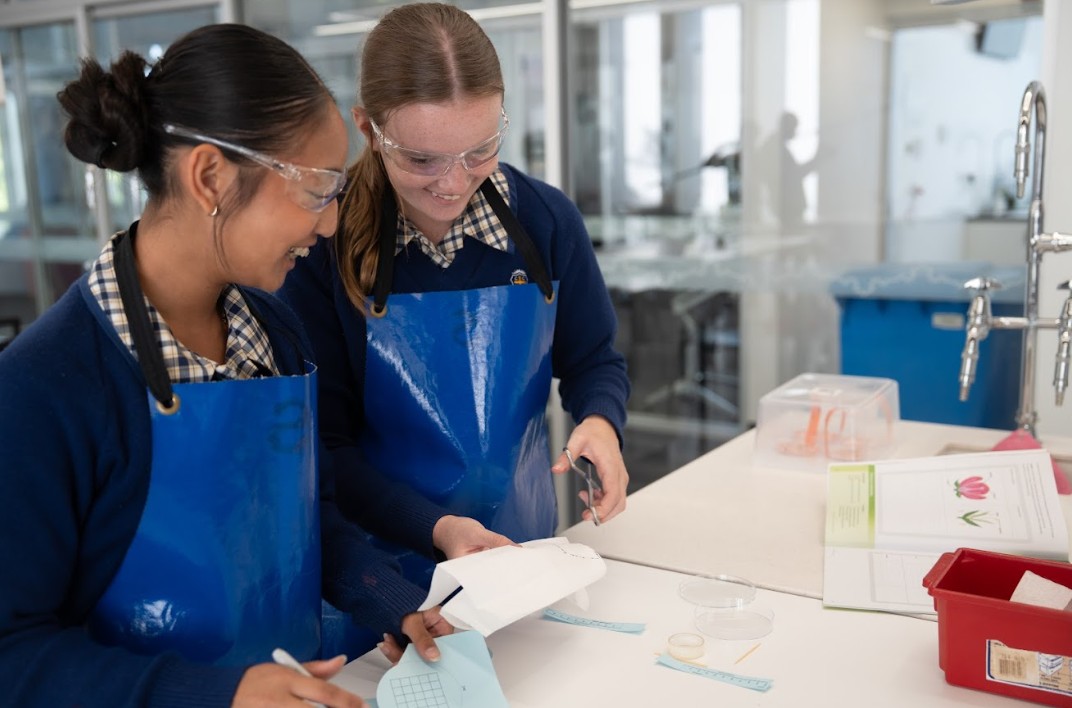
Reports show that Australia now has one of the largest gender gaps in science achievement internationally, with education experts warning that policymakers must take urgent action.
While Australia’s primary students are demonstrating real promise in STEM, the momentum falters in later years and in core science literacy.
One standout school-level program is offering young Australians inspiration—showing that when we invest in equity, engagement, and meaningful learning experiences, students rise to the challenge.
Leading educational software provider Education Perfect (EP) has unveiled a complete revision of its Science offering, adding out-of-the-box assessments, curriculum-aligned resources, analytics, and an AI content creation tool for all Australian curricula.
Each unit includes built-in tests giving teachers real-time insights and new Learning Snapshots to track progress and address gaps with tailored instruction. Students benefit from engaging visuals, characters, and storylines that make complex concepts accessible. Rolling out in Term 3, the update has already seen over 5 million assessment questions answered and strong teacher praise for its classroom impact.
Saving teachers critical time
Kelly Hollis, Senior Content Product Manager of Science at Education Perfect, said EP’s revised science offering has been carefully redesigned to save educators time and improve learning outcomes.
“The new content is streamlined, with clear, concise lessons that focus on key concepts, making it easier for teachers to deliver high-quality instruction without extensive preparation,” Hollis told The Educator.
“Each lesson integrates interactive multimedia, real-world applications, and formative assessments that engage students and reinforce learning, all aligned with the latest curriculum updates. This reimagined approach ensures that educators spend less time creating resources and more time teaching.”
To further support teachers, the new AI-powered feedback tool provides real-time, personalised feedback on extended responses, saving educators hours of marking.
“This tool not only automates the grading process but also delivers timely, constructive guidance to students, helping them improve their understanding and performance,” she said.
“By reducing administrative burdens and providing actionable insights, EP allows educators to focus on what matters most: teaching and student success.”
Hollis said the platform’s efficient use of assessment and analytics features ensures that time is spent on meaningful, high-impact activities, rather than on administrative tasks or repetitive grading.
“This ultimately empowers educators and education leaders to drive better outcomes without sacrificing valuable time.”
Content that engages all learners
EP is also tackling the gender gap in science education through its new offerings, Hollis said.
“Classrooms containing up to 30 students mean there can be up to 30 different learning styles. At EP, we help teachers support each student without compromising on outcomes,” she said.
“Diagnostics identify where students are struggling, so teachers can intervene early, and our AI-powered feedback tool saves time on marking by giving students real-time, constructive guidance to improve their extended responses.”
Hollis said EP has designed its science content to engage all learners, including girls, who are often underrepresented in STEM.
“Each unit is built around diverse and balanced themes, with engaging contexts that avoid gender bias. Lessons also incorporate interactive elements like videos, simulations, and animations to support different learning styles and keep students actively involved,” she said.
“EP focuses on building student confidence. For students, especially girls, who feel hesitant about science, we’ve designed content that’s non-threatening, accessible, and structured in manageable steps.”
Hollis said the personalised nature of the platform means students get targeted support when they need it, helping them stay on track and engaged.
“Ultimately, EP’s science design supports long-term success by combining inclusive, multimodal content with tools that build confidence and capability. We’re helping to close the gender gap and prepare all students for a future where STEM and AI will play a central role.”
Data-driven teaching – without the extra workload
Cameron McDonald, Head Teacher of Science at Narrabeen Sports High School, has noticed marked improvements in workloads and student outcomes science using EP’s tools.
“It did take some getting used to at first, but we’ve since found ways to use real-time data effectively without adding to the workload,” McDonald told The Educator.
“Our science staff now use the data in several practical ways. Some display tracking insights in class to show students when they’re on or off task, which helps reinforce focus.”
McDonald said staff often bring up extended responses for peer marking, using real examples to guide learning.
“Completion and success data are also built into our assessment tasks as they help us identify students who may need extra support, or those who are beginning to disengage, so we can intervene as early as possible.”
McDonald said EP has “transformed” the way he supports the school’s science faculty.
“With everyone using the same platform, we’ve developed a shared language that strengthens collaboration and consistency across classrooms,” he said.
“Rather than comparing performance, we focus on student growth using the pre and post-tests, which encourages reflective, evidence-based practice. It’s shifted the focus to real impact, not just outcomes, and has helped teachers understand the nature of student growth.”
McDonald said EP has also made onboarding new staff far easier.
“We can let them focus on building relationships with students and other staff, rather than spending hours creating resources. Overall, it’s helped us lift teaching quality in a supportive and sustainable way.”

